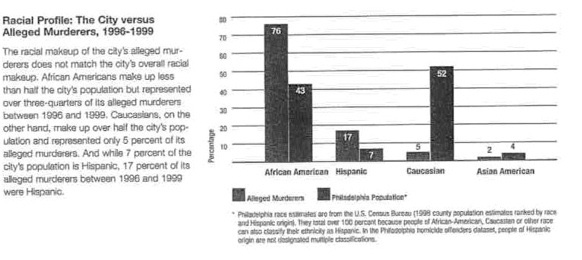Mayor Changes Tune on Black Violence Discussion
John Bennett, WND, April 20, 2013
If blacks can criticize whites, then whites should be able to say the inner city “needs to get its act together.”
That was the bottom line of “Being White in Philly,” a controversial article written by Robert Huber and published in Philadelphia Magazine.
What followed was predictable. Philadelphia Mayor Michael Nutter said the article was a “sin” and an “incitement to extreme reaction.” The mayor called upon the Philadelphia Human Relations Commission to “rebuke” the magazine and Huber.
But not long ago, Nutter was calling for a “national conversation” about racial issues: “Black on black crime is not an isolated problem. It affects every member of every community. This is a national problem with national implications, and there needs to be a national conversation.”
Huber told WND that he assumed that when the mayor said “conversation” he meant the ordinary meaning.
“We need to learn to talk to each other honestly, without fear,” Huber said. “That would be a big step toward solving some problems.
{snip}
Huber and some of the people he interviewed were critical of the crime and social disorganization in the city. Several spoke honestly about the racial aspect of crime and other social problems (See a condensed summary of their statements). On the basis of personal experience, some interviewees spoke about break-ins, assaults, robbery and other antisocial acts.
But what are the actual circumstances of crime in Philadelphia?
Over the last two decades, the city has lost 32 percent of its white population, or 263,254 people. {snip}
In the late 1990s, blacks were 43 percent of Philadelphia’s population and 76 percent of the alleged murderers (see chart below). Whites were 52 percent of the population but just 5 percent of alleged murderers.
Today, blacks are 42 percent of Philadelphia’s population and 83 percent of known murder offenders. Whites are now 37 percent of the population and 4 percent of known murder offenders.
The chart comes from a report titled “Murder Is No Mystery: An Analysis of Philadelphia Homicide, 1996-1999,” which was released in 2001 and provocatively asked:
If this went on in your own neighborhood, would you stay? Would you go out at night? Would you consider leaving the neighborhood, or even the city, if you could? Of course you would.
{snip}
A WND review of the Philadelphia Police Department’s Murder Analysis for 2007-2010 and Murder/Shooting Analysis 2012 reveals startling demographic data that affirm the crime trends found a decade earlier in the “Murder Is No Mystery” report.
Between 2007 and 2012, there were 1,987 murders (an average of 331 murders per year) in Philadelphia. Of those victims, 80 percent were black; 11.2 percent were Hispanic; 6.9 percent were white; and 1.7 percent were Asian.
Only 64 percent of these crimes had known offenders (1,290 of 1,987), with 81 percent of known offenders being black; 7.2 percent white; 10.2 percent Hispanic; and 1.2 percent Asian.
Because of the “no snitchin’” culture, “defendants charged with murder, rape, robbery and serious assaults were walking free on all charges in nearly two-thirds of all cases” in the city, the Philadelphia Inquirer reported. In 2009, Philadelphia had the lowest felony conviction rate of all large cities in America. Soon after taking office, Nutter put in 250 video cameras across the city, in part to compensate for witnesses’ refusal to cooperate with investigations.
According to a WND review of the 2012 Philadelphia Police Murder/Shooting Analysis, of known offenders in 1,083 shootings in the city between 2011 and 2012, 88 percent were by blacks (956). Hispanics represented 102 of the shooting offenders (9 percent), while whites made up 2 percent of offenders in shootings (22) in Philadelphia during that same period.
{snip}
Historically, racial disparities in crime are not simply products of the 1960s. In 1950, Philadelphia was predominantly white, with blacks comprising roughly 20 percent of the population. Even then, disproportionate levels of criminal offending existed. “Patterns in Criminal Homicide,” written by renowned criminologist Marvin Wolfgang, was hailed as the most thorough study of homicide at the time. Wolfgang studied every homicide in Philadelphia between 1948 and 1952, and concluded that many were caused by trivial insults and petty arguments (162).
Wolfgang showed that the white murder rate in Philadelphia between 1948 and 1952 was 1.8 per 100,000 people, while the black rate was 25.6, or 14 times the white rate. By the mid-1970s, the white murder rate increased to 2.8 per 100,000. The black murder rate, meanwhile, increased to 64.2, 23 times the white rate.
Many of the voices in Huber’s piece can be seen as expressing long-standing concerns, rooted in the statistical reality of crime.
{snip}
Nutter himself has had to address a subset of the black population involved in violent flash mobs. In an emotional speech, he said of those involved, “You’ve damaged yourself, you’ve damaged another person, you’ve damaged your peers and, quite honestly, you’ve damaged your own race.”
{snip}
But in response to Huber’s article, the mayor “expressly suggested that the speech in the article was unprotected, and therefore punishable outright,” observed leading First Amendment scholar Eugene Volokh.
The mayor’s official condemnation letter claimed that the article presents “negative stereotypes” of blacks. {snip}
Nutter simply said the article arose from Huber’s “misguided perception of African-Americans … as an ethnic group that, in its entirety, is lazy, shiftless, irresponsible, and largely criminal.”
{snip}
In fact, critics contend the mayor stereotyped the article. Philadelphia Magazine’s editor, who describes himself as “center-left,” told WND that the mayor’s description is a “gross distortion of the piece.”
{snip}
















